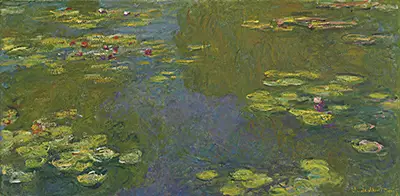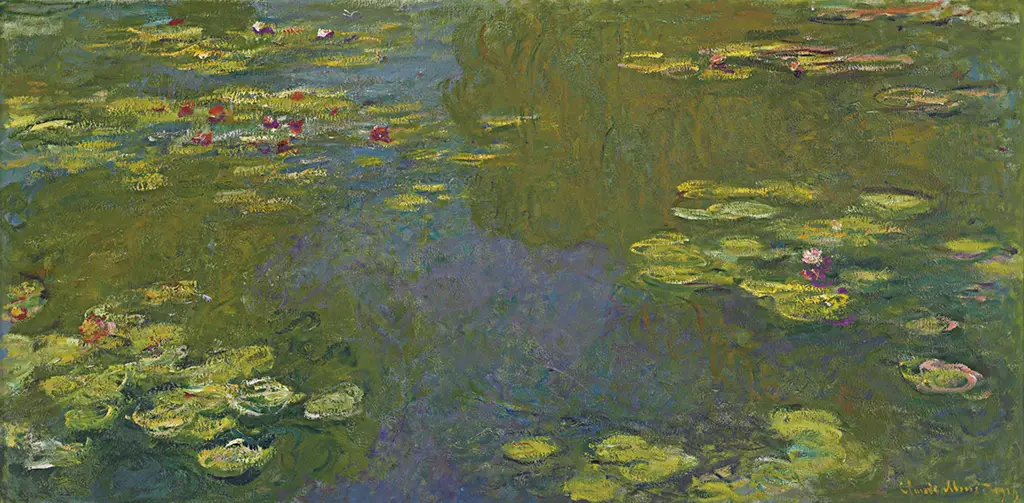This was an artist who also loved gardening as well, making it unsurprising when he chose to expand his existing garden in order to allow him a greater variety of species of plants around his property. He wanted to grow different items and also to expand the types of nature found within his paintings. It took many years for his new garden to establish itself but from then on he had a constant source of inspiration for his work that could be accessed from his own home. His house would sometimes appear at the back of some of these paintings, but generally speaking, it was his japanese bridge that would be the only element of architecture that would be found within these nature-based scenes. Even the most occasional art follower is aware of this series of paintings, which also helped to establish Monet as one of the most famous painters in the world, as well as the father of Impressionist art.
Monet would alter the colour balances within each work in his garden, with this version being predominantly green. It is only the small path of water in the centre of the painting that provides an alternative base of colour, with a blue-purple tone that is also found frequently within this artist's work. The detail is approximate, as he wanted to add emotion to his paintings and this was not achieved by delivering a photo-realistic reproduction of what he could see. Instead he would take what he saw and then translate it into his own impression, hence the Impressionist movement which was named after another of his artworks. This was moving in a similar direction to the earlier Romanticist artists, many of whom had impressed and inspired the likes of Monet around a century or so later.
Whilst Romanticism was predominantly a French invention, particularly with regards the art strand of it, it was actually the work of JMW Turner which most inspired the artist. He studied many of the expressive landscapes produced by this British artist and loved the way he went away from pure realism towards a style that communicated emotion with every brushstroke. This exchange of ideas actually went in the opposite direction from Claude Lorrain, whose own landscapes would earlier give inspiration to the likes of Turner and also Constable. This pathway summarises how art history can be explained through a series of links from one generation to the next, with each one taking what had gone before and then adding their own ideas on top.



